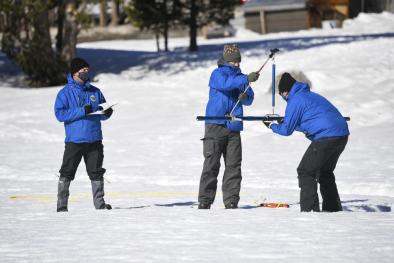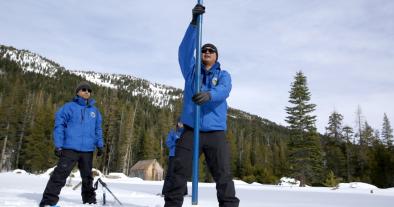Global snow drought hot spots and characteristics
Study key findings & significance
- The study offers a new framework for characterizing "snow droughts."
- Eastern Russia, Europe, and the western United States experienced longer, more intense snow droughts in the second half of the period 1980 to 2018.
- The most notable area was the western United States, which saw a 28% increase in the length of periods of snow drought.
- Droughts became less intense over the Hindu Kush, Himalayas, extratropical Andes, and Patagonia regions.
- Natural and human-driven factors (e.g., atmospheric circulation patterns, polar vortex movement, and Arctic warming) likely contribute to snow droughts.
Author quotes
It's important to remember that not only does the snowpack vary but the impact that it has differs across the world. We know that the snowpack is highly variable. Further development of this framework can improve our near real-time monitoring of drought.
Laurie S. Huning, lead author and environmental engineer at the University of California, Irvine
Abstract
Snow plays a fundamental role in global water resources, climate, and biogeochemical processes; however, no global snow drought assessments currently exist. Changes in the duration and intensity of droughts can significantly impact ecosystems, food and water security, agriculture, hydropower, and the socioeconomics of a region. We characterize the duration and intensity of snow droughts (snow water equivalent deficits) worldwide and differences in their distributions over 1980 to 2018. We find that snow droughts became more prevalent, intensified, and lengthened across the western United States (WUS). Eastern Russia, Europe, and the WUS emerged as hot spots for snow droughts, experiencing ∼2, 16, and 28% longer snow drought durations, respectively, in the latter half of 1980 to 2018. In this second half of the record, these regions exhibited a higher probability (relative to the first half of the record) of having a snow drought exceed the average intensity from the first period by 3, 4, and 15%. The Hindu Kush and Central Asia, extratropical Andes, greater Himalayas, and Patagonia, however, experienced decreases (percent changes) in the average snow drought duration (−4, −7, −8, and −16%, respectively). Although we do not attempt to separate natural and human influences with a detailed attribution analysis, we discuss some relevant physical processes (e.g., Arctic amplification and polar vortex movement) that likely contribute to observed changes in snow drought characteristics. We also demonstrate how our framework can facilitate drought monitoring and assessment by examining two snow deficits that posed large socioeconomic challenges in the WUS (2014/2015) and Afghanistan (2017/2018).
Related Content






